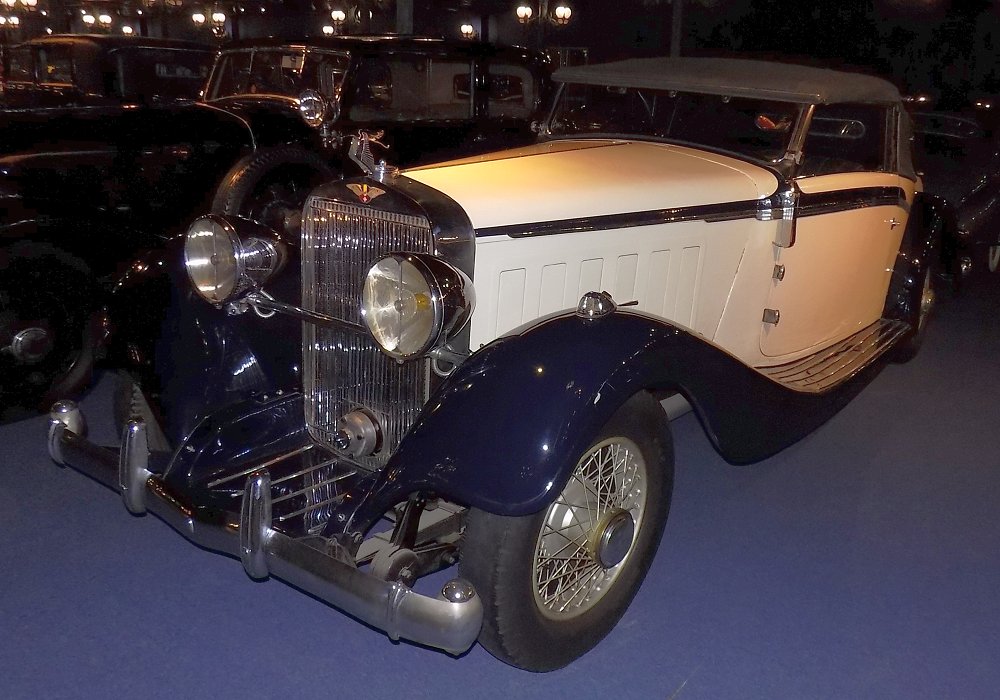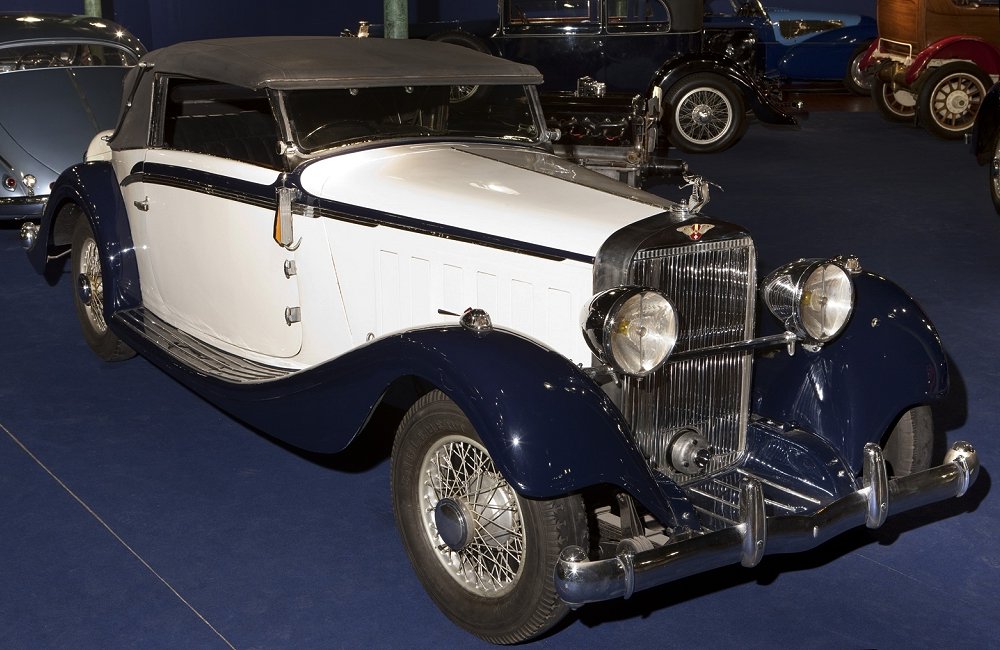Description
The Hispano-Suiza K6 Vanvooren Cabriolet was one of the most refined and beautifully crafted luxury automobiles of the 1930s, a car that perfectly captured the elegance and engineering sophistication of Hispano-Suiza in its final years of automobile production. Built on the superb K6 chassis and clothed by the renowned Parisian coachbuilder Vanvooren, the car represented the ideal combination of advanced technology, understated luxury, and artistic design that defined the marque’s reputation among Europe’s elite.
Introduced in 1934, the Hispano-Suiza K6 was conceived as a slightly smaller and more accessible alternative to the company’s flagship J12 V12 model. While the J12 was designed for royalty and industrial magnates, the K6 was aimed at those who still desired the company’s trademark craftsmanship and innovation in a more manageable form. Despite being positioned as a “junior” model, the K6 was by no means ordinary. It embodied the same uncompromising engineering philosophy that Marc Birkigt, Hispano-Suiza’s legendary chief engineer, had brought to all of his designs.
Under the hood, the K6 featured a magnificent 5.2-litre inline six-cylinder engine with a single overhead camshaft, derived directly from Hispano-Suiza’s aircraft and racing experience. Constructed with the same precision and attention to balance as the J12’s V12, the K6’s engine produced around 120 horsepower, allowing the car to cruise smoothly at 140 km/h (87 mph). Power delivery was effortless, and the car’s refinement was such that it rivalled even the finest offerings from Rolls-Royce and Delage. The K6’s chassis incorporated servo-assisted four-wheel brakes—a Hispano-Suiza hallmark—and an independent front suspension system that provided exceptional ride comfort and stability.
The Vanvooren Cabriolet body gave the K6 an air of graceful sophistication. Carrosserie Vanvooren, based in the Paris suburb of Courbevoie, was one of the most respected coachbuilders of the interwar period, known for its elegant lines, flawless craftsmanship, and impeccable sense of proportion. The Cabriolet design was characterized by its long, sweeping fenders, low roofline, and subtly flared rear deck. When the fabric top was folded down, the car revealed an open profile that was both sporting and dignified, perfectly suited to leisurely drives along the French Riviera or through the boulevards of Paris.
The craftsmanship extended to the smallest details. The polished chrome fittings, flush door handles, and neatly integrated spare wheel demonstrated Vanvooren’s mastery of design harmony. Every contour of the body was shaped by hand, giving the car an organic flow that no machine stamping could replicate. The result was a coachbuilt automobile that balanced visual delicacy with structural solidity—a rare achievement in the 1930s luxury market.
Inside, the Hispano-Suiza K6 Vanvooren Cabriolet was a masterpiece of quiet luxury. The cabin featured hand-stitched leather seats, finely polished wood veneers, and expertly crafted switchgear that operated with precise smoothness. The instrumentation was elegantly arranged, with beautifully engraved dials and chrome accents. Every surface reflected the marque’s philosophy of mechanical perfection combined with aesthetic restraint. The atmosphere was one of refined calm, whether the car was being driven by a chauffeur or by its owner.
On the road, the K6 Cabriolet offered a blend of power, comfort, and composure that few contemporaries could match. The six-cylinder engine delivered smooth, linear power, and the servo-assisted braking system provided confident stopping ability even from high speeds. The car’s independent front suspension contributed to a remarkably supple ride, allowing it to glide effortlessly over uneven roads. Hispano-Suiza’s precise engineering ensured that even at speed, the car remained whisper-quiet and vibration-free, qualities that made it a favorite among sophisticated European motorists.
Production of the Hispano-Suiza K6 was limited, with only around 200 examples built between 1934 and 1937, and far fewer surviving today. Each was a bespoke creation, its coachwork designed to the specifications of its original owner. The Vanvooren Cabriolet versions are among the most admired, representing the perfect harmony between Hispano-Suiza’s mechanical excellence and Vanvooren’s restrained elegance.
Today, the Hispano-Suiza K6 Vanvooren Cabriolet is celebrated as one of the finest examples of prewar French luxury motoring. It symbolizes the twilight of an era when cars were individually crafted works of art—machines built for beauty, precision, and comfort rather than mass production. To see one today is to witness the union of engineering genius and coachbuilt artistry at its absolute peak, a timeless expression of grace and power that continues to captivate enthusiasts and collectors around the world.


